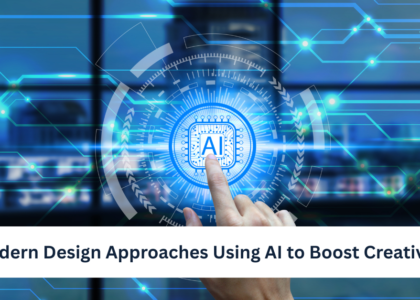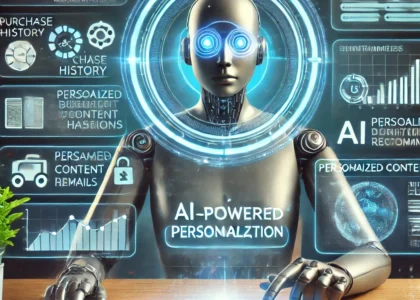What is AI?
Artificial Intelligence (AI) refers to the creation of computer systems that can perform tasks typically requiring human intelligence. This includes activities like recognizing speech, making decisions, translating languages, and more. The term has its roots in the 1950s, when pioneers like Alan Turing and John McCarthy began exploring the idea of machine intelligence.
In the world of AI, we often encounter two major types:
- Narrow AI: This type of AI is designed to perform a specific task, such as recommending movies on Netflix or powering virtual assistants like Siri and Alexa.
- General AI: This refers to a more advanced concept where machines would possess the ability to understand, learn, and apply knowledge across a range of activities, similar to human cognitive abilities, which, as of now, remains mostly theoretical.
Common terminologies related to AI include:
- Machine Learning: A subset of AI where systems learn from data, improving their performance over time without being explicitly programmed.
- Neural Networks: A series of algorithms that mimic the way the human brain operates, used for pattern recognition and data classification.
How AI Works
At its core, AI functions through algorithms, which are sets of rules or instructions that guide the machine on how to perform its tasks. This often involves the use of large datasets, which allow the system to learn from previous examples. For instance, consider how self-driving cars analyze countless images before being able to recognize pedestrians or street signs.
Training data is a crucial element:
- Algorithms use this historical data to identify patterns and make predictions, improving their accuracy with more input.
- The better the quality of the training data, the better the AI’s performance.
AI is already functioning in many everyday applications, such as:
- Virtual customer service agents.
- Image recognition in social media.
- Personalized online shopping recommendations.

AI vs. Human Intelligence
There are notable distinctions between AI and human intelligence:
- Nature of Cognition: AI operates on a set of predefined rules and lacks the capacity for emotional understanding or ethical reasoning.
- Emotional Dimensions: Human intelligence allows for empathy, feelings, and moral judgments, which AI cannot replicate.
A common misunderstanding is that AI can think like humans—this is simply not true. AI may process information quickly and draw conclusions, but it doesn’t “understand” in a human way.
Common Misconceptions About AI Capabilities
AI Can Think Like Humans
One of the most prevalent myths is that AI can think like a human. The truth is, AI lacks real understanding and consciousness. Its “intelligence” comes from the data it processes.
For example, AI algorithms can excel at language translation, but they can misunderstand context, leading to errors. A classic case is when AI misinterprets idiomatic expressions, resulting in translations that sound nonsensical.
AI Will Replace Human Jobs Completely
Many fear that AI will completely take over jobs, leading to mass unemployment. However, the reality is more nuanced. While some jobs may be automated, AI often complements human roles rather than replacing them.
For instance, in the medical field, AI tools assist doctors in diagnosing diseases but do not replace the human element of patient care. Jobs may be reshaped; instead of full displacement, new opportunities emerge in areas like AI maintenance and ethics oversight.
Historically, technology has transformed job landscapes—think of how the introduction of computers changed office work or how the Internet created entirely new industries.
C. AI is Infallible
Another misconception is that AI systems are infallible. This is far from reality; AI can and does make mistakes. The fact is, all AI systems have error rates influenced by their programming and the data they are trained on.
Instances of AI failure, such as misidentifying individuals in facial recognition systems leading to wrongful accusations, highlight the necessity of human oversight. Errors in AI can have significant consequences, so it’s crucial to keep humans in the loop.

Misunderstandings Around AI Ethics and Safety
AI Can Make Decisions Without Bias
Unfortunately, AI is not free from bias. Bias can enter AI systems through the training data, which may reflect societal prejudices. For example, hiring algorithms might unfairly disadvantage certain demographic groups if they are trained on biased historical data.
Case studies have showcased biased AI outcomes, like facial recognition technology misidentifying people of color at a higher rate than their white counterparts, emphasizing the importance of ethics in AI development.
AI Is Always Objective
Contrary to popular belief, AI is not inherently objective. It operates based on the information it’s given, and this information can be influenced by human biases.
For example, if an AI system is trained on an unbalanced dataset reflecting only specific opinions or demographics, it may skew its outputs towards those biases. This makes transparency in AI programming vital.
The AI Apocalypse is Imminent
Cultural narratives often portray AI as a looming threat, suggesting an imminent ‘AI apocalypse.’ However, the current capabilities of AI are nowhere near those dramatized in movies.
While concerns about AI are valid, especially regarding regulation and ethical use, collaborative efforts between developers and regulators are underway to establish safety protocols and ensure responsible AI development.

Public Perception and Media Influence
A. How Media Shapes AI Misconceptions
Media plays a significant role in shaping public understanding of AI. Films and television often portray AI in sensationalized ways, leading to unrealistic expectations and fears.
Sensational headlines can exacerbate misconceptions, causing more confusion instead of clarity. Journalism has a responsibility to inform accurately, but sometimes sensationalism takes precedence over education.
The Role of Social Media in Propagating Myths
Social media can amplify misinformation about AI. Viral posts, often without fact-checking, can create confusion and spread myths.
Community discussions can sometimes veer off course, leading to misunderstandings rather than enlightenment. To counteract this, it’s important to foster conversations rooted in factual information and clarity.
The Importance of Education and Transparency
Educating the public about AI through initiatives and campaigns can help dispel myths. Transparency in AI development fosters trust and understanding, making technology more accessible.
Successful outreach programs, like AI workshops and community events, help illuminate AI concepts, allowing people to engage meaningfully with the topic.
Moving Forward: Addressing Misconceptions
Building a Stronger Foundation of Knowledge
To combat misconceptions, we need improved educational resources on AI. Collaboration between tech companies and educational institutions can develop curricula that clarify AI concepts for all ages.
Encouraging critical thinking is vital when assessing AI information—being skeptical of what you read can prevent misunderstanding.
Engaging with Diverse Voices in AI Development
Inclusivity in AI conversations is crucial. Input from various stakeholder groups can lead to more rounded perspectives and solutions.
Community-led AI initiatives, which prioritize diversity, can contribute to ethical AI advancements that reflect the wider society.
Continuous Learning and Adaptation
The world of AI is constantly evolving. Emphasizing ongoing education and skill development will prepare everyone for changes ahead.
Creating platforms for discussions on AI ethics and applications can foster an environment of continuous learning, benefiting everyone involved.

FAQs
Q1: What are the most common misconceptions about AI?
The most common misconceptions include beliefs that AI can think like humans, will replace jobs completely, and is infallible.
Q2: How can I learn more about AI to dispel these myths?
Engaging with educational resources, attending workshops, and following reputable news sources can enhance your understanding of AI.
Q3: What steps can industries take to ensure ethical AI use?
Industries can prioritize transparency, engage diverse perspectives in development, and actively address bias in AI systems.
Q4: Why is it important to understand the difference between AI and human intelligence?
Understanding this difference helps ground expectations and encourages us to apply AI ethically rather than fearfully.
Q5: How do bias and transparency impact AI systems?
Bias can lead to unfair outcomes, while transparency fosters trust and enhances accountability in AI applications.
Conclusion
Misconceptions about artificial intelligence can shape how society reacts to and engages with this powerful technology. When AI is misunderstood, it often leads to unnecessary fear, unrealistic expectations, and resistance to innovation. These misunderstandings can also result in poor decision-making at both the individual and organizational levels, potentially limiting the positive impact AI can have in areas like healthcare, education, sustainability, and business.
It’s essential to recognize that AI is not a magical solution nor an unstoppable force—it is a tool created by humans, shaped by the data it’s trained on, and guided by the decisions of its developers and users. Like any tool, its effectiveness and ethical impact depend largely on how well we understand and manage it.
Promoting AI literacy means going beyond headlines and hype. It requires a commitment to learning how these systems work, what they can and cannot do, and the ethical considerations that come with their use. Responsible AI education empowers people to make informed decisions, ask better questions, and actively participate in conversations about how AI should be developed and used.
We must also encourage more inclusive voices in these conversations—voices from diverse backgrounds, industries, and communities. A well-rounded understanding of AI needs input from not only technologists but also educators, artists, ethicists, policy-makers, and everyday users. This diversity helps ensure that AI serves everyone fairly and responsibly.
As we move forward into a world increasingly influenced by intelligent systems, let’s stay curious, critical, and collaborative. Let’s question boldly, learn continuously, and build systems that reflect the values we want to see in the future.
Your voice matters in the AI conversation—because the future of AI is not just about machines, but about all of us.






